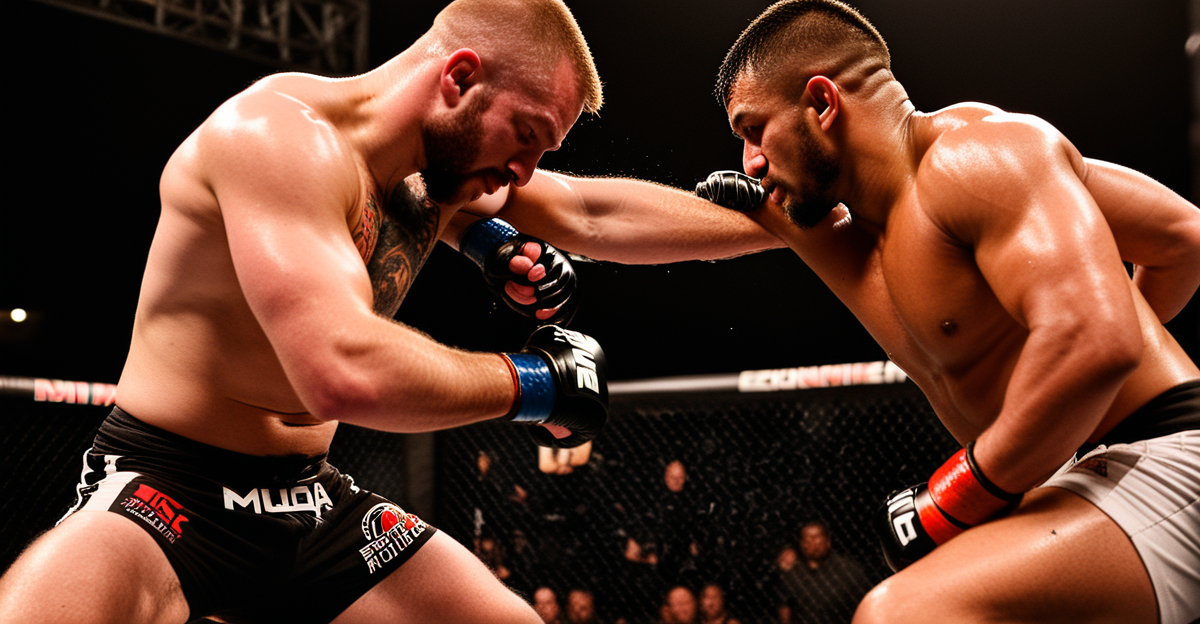Fundamentals of Ground-and-Pound in UK MMA
Understanding the ground-and-pound basics is crucial for mastering this effective MMA strategy. At its core, ground-and-pound involves achieving dominant top positions and delivering strikes that wear down an opponent while maintaining control. The most common key positions where these tactics thrive include mount, half-guard, and back control. Each position offers unique opportunities for maintaining balance and maximizing strike power.
UK MMA regulations demand that fighters execute ground-and-pound using legal techniques to ensure safety and fairness. For example, strikes like elbows to the back of the head or spine are prohibited, and referees strictly monitor tactical moves to prevent fouls. Structuring your attacks within these rules enhances both effectiveness and compliance in UK competitions.
This might interest you : Maximize your karate skills: expert stretching methods for peak flexibility in the uk
In particular, the mount position allows unrestricted movement for strikes while minimizing opponent counterattacks. Half-guard provides both offensive and defensive balance, while back control offers superior positional dominance and options to transition into submissions or continued strikes. Mastering these positions within the framework of UK MMA regulations is foundational for successful ground-and-pound application.
Drilling Essential Ground-and-Pound Techniques
Developing effective ground-and-pound basics requires focused practice on technique breakdowns and consistent drills. To optimize striking power from dominant top control, fighters must prioritize posture and body alignment. Maintaining a strong base improves both balance and impact force, essential for sustained offense within UK MMA regulations.
Also read : Mastering breakfalls: key strategies for uk judo coaches to boost athlete performance
A step-by-step guide helps solidify these fundamentals:
- Secure a stable position, typically mount or half-guard, to control opponent movement.
- Keep elbows tight, shoulders engaged, and maintain hip pressure to prevent escapes.
- Deliver strikes with quick, precise motions, targeting openings while respecting legal techniques restrictions, such as avoiding illegal strikes to forbidden areas.
Repeated MMA training drills sharpen reaction time, helping fighters distinguish between moments to strike or shift position defensively. Drills focusing on combinations and posture correction enhance accuracy and prevent poor posture errors that can compromise control. Incorporating situational sparring allows understanding of pressure dynamics and refines timing, critical in complying with UK competition rules.
Striking power combines with control mastery when these drills are methodical and well-integrated into overall fight strategy. Emphasizing technique and positioning within UK MMA regulations ensures effectiveness without risking penalty, making drilling essential for ground-and-pound success.
Common Mistakes and How to Avoid Them
Avoiding typical ground-and-pound errors is essential to maintain control and improve fight performance. One frequent mistake is overcommitting strikes, which exposes openings that opponents exploit to reverse positions. Precision and restraint are necessary to balance offense and defense during transitions.
Another common error involves poor posture. Fighters often lose positional control by letting hips drop too low or arms extend improperly. This weakens base stability and increases vulnerability to escapes or counters. Maintaining a tight, compact frame aligns with UK MMA regulations for both effectiveness and safety.
Failing to adjust techniques to opponent movement also hinders ground-and-pound success. Reactive adaptation is critical; static striking patterns allow the opponent to anticipate and defend. Sharpening situational awareness during MMA training drills can help fighters improve reaction time and enhance tactical flexibility.
By recognizing these pitfalls, fighters can troubleshoot their performance, safeguarding control while applying strikes legally and efficiently. Such vigilance fosters growth in ground-and-pound basics and adherence to competition rules, ultimately boosting in-cage effectiveness.
Equipment, Training Resources, and UK Gym Networks
Choosing the right training equipment is vital for effective ground-and-pound practice. Essential gear includes durable gloves designed for MMA impact, focusing on wrist support and knuckle protection. Quality pads and mats help simulate realistic striking conditions while minimizing injury risk, enabling fighters to consistently refine technique breakdowns safely.
UK MMA gyms offer specialized environments for developing ground-and-pound basics. Many local gyms emphasize legal techniques tailored to UK MMA regulations, ensuring fighters train within competition rules. Training centres also provide access to experienced coaches who guide improvements through tailored MMA training drills and situational sparring.
For fighters seeking continuous growth, numerous online resources complement in-gym instruction. These platforms often feature video breakdowns of technique, tutorials on posture adjustment, and forums where UK fighters exchange advice on equipment choices and gym recommendations.
Integrating quality equipment with expert coaching and comprehensive resources creates an ideal setup for mastering ground-and-pound. Utilizing UK MMA gyms and community support ensures fighters remain compliant with legal techniques while advancing power and control in their ground strategy. This foundation builds confidence and resilience, indispensable for competitive success.
Integrating Ground-and-Pound into Fight Strategy
Effectively integrating ground-and-pound basics into overall fight planning is essential for success in UK MMA. This tactical integration involves blending striking dominance with submissions and positional transitions, creating fluid pressure on the opponent. Skilled fighters shift seamlessly between strikes and submission threats, forcing adversaries to defend multiple attacks simultaneously.
UK expert advice emphasizes adapting ground-and-pound strategies based on the opponent’s style and match context. For example, against a wrestler focused on control, increasing striking volume from mount or half-guard can disrupt their rhythm and set up submission attempts. Conversely, against strikers, maintaining tight control and applying calculated strikes limits counterattacks.
Timing and flow remain critical: a pause or hesitation can allow escapes, while relentless pressure keeps the opponent on the defensive. Professional UK coaches recommend drilling sequences that mimic fight scenarios, improving reaction time and decision-making under pressure.
By combining solid positional control with dynamic transitions and precise striking, fighters optimize both offense and defense. Such integration aligns with UK MMA regulations and legal techniques, ensuring both effectiveness and compliance. This balanced approach, advised by UK pros, enhances adaptability and success in real competition settings.
